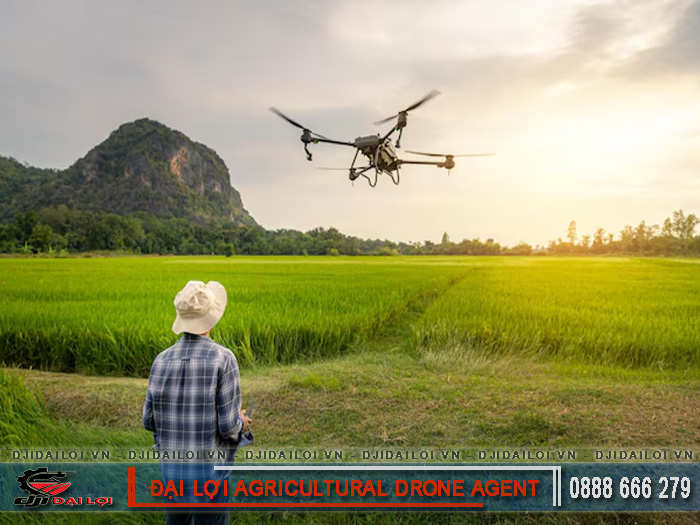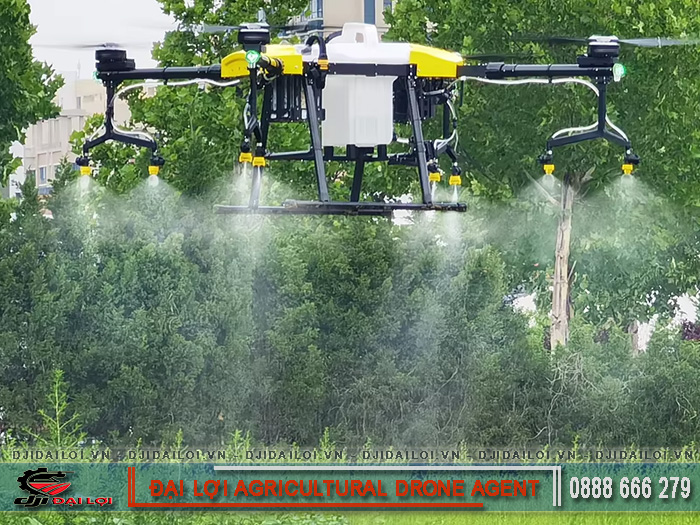
Why are farmers switching to remote-controlled pesticide-spraying drones?
With climate change, increasing pest infestations, and the rising cost and difficulty of manual spraying, many farmers have turned to remote-controlled pesticide-spraying drones to overcome the weaknesses of traditional methods.
In the past, pesticide application was done manually: farmers carried heavy sprayers, walked through the fields, and sprayed by hand. This method was labor-intensive, weather-dependent, inconsistent, and wasteful. In contrast, agricultural drones can be programmed to fly along mapped routes, spray evenly over large areas, and be operated from a safe distance.
Key reasons why farmers are shifting to drone spraying include:
- Traditional labor for spraying is increasingly scarce and costly.
- Larger farming areas or complex terrains (hills, terraced fields) make manual spraying difficult.
- Growing demands for environmental and worker safety, requiring reduced direct contact with chemicals.
In short, modern agriculture is pushing farmers to rethink their spraying methods, making remote-controlled drone spraying a natural and effective choice.
When should you invest in a remote-controlled pesticide-spraying drone?
Before purchasing a remote-controlled spraying drone, farmers should evaluate several key factors to ensure an efficient investment:
1. Farming area and spraying frequency
If the farmland is large (a few hectares or more) or requires frequent spraying, the drone can quickly pay for itself. For small plots with infrequent spraying, the return is slower.
2. Terrain and crop type
Flat, open fields are ideal. However, for small, scattered plots or tall crops and orchards, the suitability of drone spraying should be assessed.
3. Investment cost and budget
The initial investment can be significant-around 200 million VND or more for a complete system. Farmers should calculate total costs, including purchase, operation, and maintenance, versus the savings in labor and chemical use.
4. Technology readiness and experience
Drones work best when combined with GPS/RTK mapping, control software, and precision spraying systems. Farmers need basic tech skills or trained operators.
5. Worker and environmental safety
If the goal is to minimize chemical exposure and protect both workers and the environment, drone spraying strongly supports this priority.
→ When these conditions are met-large area, sufficient budget, suitable terrain, and focus on safety-investing in a remote-controlled pesticide-spraying drone becomes a sound decision.
Advantages and disadvantages of remote-controlled pesticide-spraying drones
Advantages:
- Labor and time efficiency: Drones replace multiple manual workers, especially on large farms.
- Precision and effectiveness: GPS and sensors ensure uniform spraying, better canopy penetration, and reduced overlap.
- Reduced chemical and water use: Saves 30–50% of chemicals and up to 90% of water compared to manual spraying.
- Safety and environmental protection: Operators avoid direct contact with hazardous chemicals; drift and pollution are minimized.
- Flexibility: Works on flat fields, terraced rice paddies, orchards, and hilly terrain where manual spraying is difficult.
Disadvantages and risks:
- High upfront cost: Around 200 million VND or more for professional-grade models such as the DJI agricultural drone; small-scale users may find it hard to recoup the investment.
- Technical requirements: Operators need skills in flight planning, mapping, and maintenance. Without training, efficiency drops.
- Weather dependence: Strong wind, rain, or dense crops may affect drone performance.
- Slow ROI for small farms: On small plots, it may take 1.5–3 years or more to recover the investment.
- Maintenance costs: Batteries, motors, and sensors wear out and must be replaced periodically.
→ In summary, remote-controlled pesticide-spraying drones are not the best option for every farmer, but under the right conditions, their advantages are clear and highly worthwhile.
What benefits do remote-controlled spraying drones bring to farmers?
Reasons why many farmers adopt remote-controlled spraying drones include:
- Higher productivity: Studies show a 10–15% increase in crop yields compared to manual spraying.
- Cost savings: Reduces 30–50% of pesticide use and up to 90% of water consumption.
- Faster operation: One drone can spray 5–10 ha per hour, much faster than manual work.
- Lower labor costs: Cuts labor needs, especially during peak seasons.
- Improved safety: Minimizes direct exposure to chemicals and occupational risks.
Thus, when properly invested and operated, remote-controlled pesticide-spraying drones deliver strong economic and technical performance.

When should and shouldn’t drones be used for spraying?
Recommended for use when:
- The farming area is large (e.g., > 5 ha or multiple plots).
- Terrain is hard to reach (hills, terraces, orchards).
- Spraying is frequent due to pest outbreaks.
- Manual labor is scarce or expensive.
- The goal is to modernize production and improve safety.
In these cases, investing in a remote-controlled pesticide-spraying drone can significantly enhance efficiency and cut long-term costs.
Not recommended or use with caution when:
- The area is small and spraying occurs only a few times a year.
- No one in the household is trained to operate drones-hiring operators may cancel out benefits.
- The budget is limited or risk tolerance is low.
- Weather conditions are unfavorable or the terrain is too irregular for efficient flights.
Investment costs, ROI, and usage notes
Investment and ROI:
- A complete drone set costs around 200 million VND or more.
- Payback time: typically 1.5–3 years depending on area and usage frequency.
- Include hidden costs: replacement batteries, maintenance, operator training, or hiring fees.
- Equipment depreciation over time may reduce efficiency as newer technologies emerge.
Usage guidelines:
- In some regions, drone operations require flight registration and must maintain safe distances from people, homes, and water sources.
- Pesticide regulations still apply-correct dosage, crop type, and timing must be observed.
- Operators should receive training in piloting, maintenance, and troubleshooting to ensure safety and performance.
Investing in remote-controlled pesticide-spraying drones brings clear advantages-saving time, reducing labor, improving efficiency, enhancing safety, and protecting the environment. However, not every farm should invest immediately. Factors like field size, budget, spraying frequency, and operator skills determine success.
If you have large fields, aim to modernize your operations, and can manage the equipment, a remote-controlled spraying drone is a worthy investment. For smaller farms or occasional use, renting drone spraying services may be more economical until equipment prices decrease.
FAQs about remote-controlled pesticide-spraying drones
Should I hire drone spraying services instead of buying?
Yes. If your farmland is small or you’re not ready for a large investment, hiring drone services lets you enjoy the benefits without purchase and maintenance costs.
Why haven’t some farmers adopted drone spraying yet?
Mainly due to high initial costs, lack of skilled operators, or limited efficiency on small plots with infrequent spraying.
When is the best time to use drones during the crop season?
When pest outbreaks begin or right after harvest to prepare for the next crop-fast, uniform spraying at these times yields the best results.
Are drones suitable for small gardens (< 1 ha)?
Not always. For very small areas, the cost of owning and operating a drone may outweigh the benefits. Renting or manual spraying may be better.
What risks come with using spraying drones?
Risks include equipment failure, battery depletion mid-flight, bad weather, or improper operation-potentially causing chemical waste or environmental harm. Proper training and maintenance are essential.

